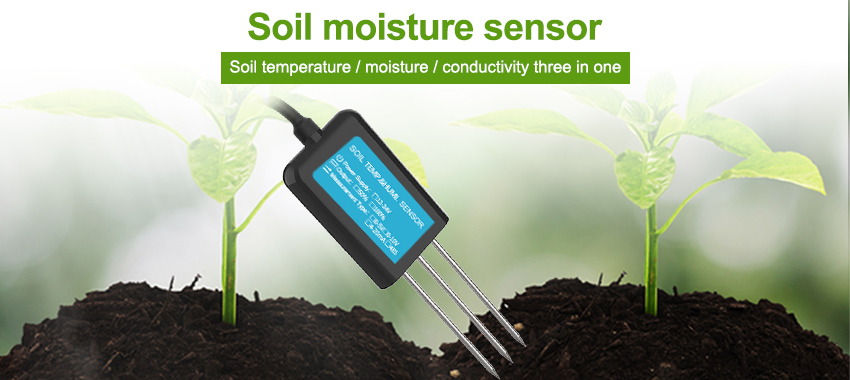Soil is a critical natural resource that supports almost all life on our planet. It provides the foundation for agriculture, forestry, and many other human activities, as well as plays a vital role in regulating the Earth’s climate and biodiversity. However, soil degradation caused by factors such as erosion, deforestation, and pollution has become a significant global problem that threatens the sustainability of these activities and the health of our ecosystems. To address this issue, soil sensors have emerged as a promising tool for monitoring and managing soil quality, enabling sustainable land use and conservation practices. In this article, we will explore the various applications of soil sensors and their potential to revolutionize the way we manage our soil resources.

- Agriculture
Agriculture is one of the primary drivers of soil degradation, with intensive farming practices depleting the soil’s nutrients, reducing its fertility and ecosystem services. Soil sensors can help farmers monitor soil moisture, temperature, nutrient levels, and other key parameters, enabling them to optimize their use of water and fertilizers while minimizing their environmental impact. By providing real-time data on soil conditions, farmers can make informed decisions about planting, irrigation, and fertilization, reducing costs, improving yields, and promoting sustainable land use practices.
Forestry
Forests are essential for maintaining soil health and preventing erosion, but deforestation and unsustainable logging practices are damaging these ecosystems. Soil sensors can help forest managers monitor soil moisture, temperature, and nutrient levels, providing insights into the health of the forest and enabling them to implement more effective conservation strategies. For example, sensors can be used to monitor the impact of logging operations on soil quality and identify areas where reforestation or other restoration activities may be necessary.
Landscaping and Urban Planning
Soil sensors can also play a critical role in landscaping and urban planning, where they can help to ensure that green spaces are healthy and sustainable. By monitoring soil moisture, temperature, and nutrient levels, sensors can provide insights into the health of plants and grasses, enabling landscape designers and urban planners to select appropriate species and implement effective irrigation and fertilization practices. This can help to reduce water usage, improve plant health, and create more attractive and sustainable urban environments.
Environmental Monitoring and Research
Soil sensors are also used extensively in environmental monitoring and research, particularly in areas such as ecology, climate science, and geology. By collecting data on soil moisture, temperature, and other parameters, researchers can gain insights into the health and function of ecosystems, as well as how they respond to environmental changes such as climate change or land use. This information can be used to develop effective conservation and management strategies that promote the sustainable use of soil resources.

Disaster Response and Management
Finally, soil sensors can also play a critical role in disaster response and management, particularly in areas prone to natural disasters such as floods, landslides, and droughts. By monitoring soil moisture levels, sensors can provide early warning of potential disasters, enabling authorities to take proactive measures to minimize their impact. Soil sensors can also help to identify areas where soil erosion or other soil-related hazards may be a risk, enabling authorities to implement appropriate mitigation measures.
In conclusion, soil sensors have enormous potential to revolutionize the way we manage our soil resources. By providing real-time data on soil quality parameters, these sensors enable better decision-making, more efficient resource management, and improved environmental protection. As technology continues to evolve, the potential applications of soil sensors are only limited by our imagination. With ongoing research and development, we can expect to see even more innovative solutions to address our global soil challenges.
